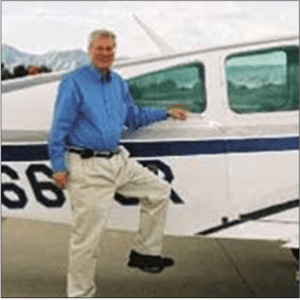I live close enough to a private runway that I walk by one end of it almost every day. So it was a few weeks ago when I encountered one of my neighbors hightailing it down the street on a single-seat ATV, pausing only long enough to share something about a crashed airplane at the far end of the runway before motoring off. I changed course in that direction long enough to spot what appeared to be a complete, undamaged airplane sitting in what passes for that runway’s run-up area.
Shortly, another ATV began towing the airplane toward me, so I reversed course and waited for it to roll past. It was a fixed-gear, high-performance piston single and it didn’t appear to have a scratch on it. The propeller blades were undamaged, it rolled easily, all the tires held air and there was no oil streaked down the side nearest me, nor an obvious fuel leak. I noted the registration and continued my stroll.
Later, I checked the audio archives at LiveATC.net for the local approach control frequency. After a couple of minutes, I was rewarded by a male voice telling Tampa Approach the airplane was off Sarasota, and heard the controller clear it for an on-course climb. The ADS-B data from FlightAware.com showed the airplane heading almost due east after departure, and then abruptly making a 180-degree turn to the right, apparently heading back to KSRQ. Then it turned left toward the neighborhood runway and descended, and its data stream ended.
I matched up the time stamps on the ATC audio with the ADS-B data and heard some unintelligible radio transmissions but little else. I let the archived audio play and was again rewarded when another voice told ATC he had been monitoring Guard and the airplane in distress had landed safely.
A few days later, I noticed the incident airplane sitting in another neighbor’s hangar and got to talking with the people tending to it. The mechanic had been on-site for only a few minutes and didn’t yet know what was wrong. I got a good look at the decowled engine and the rest of the airplane, but there was no obvious mechanical reason for the divert. Another few days later, the airplane was gone, presumably much healthier than when it arrived. Thus ended that little bit of local drama.
It’s not at all clear to me what happened that required the diversion and visit to the neighborhood runway, other than it seemingly suffered some kind of engine-related problem. The short time the airplane spent here suggests that whatever the problem was, it had a quick fix. My early guess would have been a fuel-related issue—and that may have been the case—but I also don’t discount the likelihood of a bad cylinder or magneto. Whatever happened, the pilot wanted to be on the ground now.
Presuming it was the engine, the pilot apparently was able to coax partial power from it, at least enough to extend the glide to my nearby runway but perhaps not enough to return to Sarasota. The scuttlebutt is that the pilot immediately declared the emergency, and then asked for and received a vector back to KSRQ. After the turn, it’s possible the pilot got around to hitting “Nearest” on his gadget and liked what he saw. Or ATC pointed out the nearest runway and provided vectors.
From what little I could piece together, it seemed like a good job all around. Local ATC probably played a role in pointing out the runway, and the pilot deserves major props for squeezing a slick single onto the neighborhood runway, never having seen it before and without an apparent scratch.
ROBERT A. “BOB” WRIGHT

Long-time readers will remember frequent contributor Robert A. “Bob” Wright, who focused on risk-management topics in these pages for several years. Sadly, Bob passed away on January 14, 2023, at his home in Bellingham, Washington.
Long before I took this magazine’s left seat, I had the good fortune to know Bob in his capacity as “AFS-800”—the internal FAA code for what was then the Flight Standards Service’s General Aviation and Commercial Division. Bob managed that office in the early 2000s before retiring from the FAA in 2005, after 22 years with the agency. His work as “800” included acronyms like AGATE and FITS, and he helped promote risk-management concepts throughout the industry.
After the FAA, Bob formed Wright Aviation Solutions LLC, to provide tailored aviation safety, regulatory, training and operational consulting to an array of aviation clients. He also served as Director of Flight Training at Eclipse Aviation, designing the single-pilot type-rating program for the Eclipse 500, and consulted with Cirrus Aircraft on similar training for the SF50 Vision Jet.
Bob was a flight instructor, held an airline transport pilot certificate with four turbojet type ratings and had almost 10,000 flight hours in more than 100 aircraft types. His industry recognitions include the NBAA Safety Committee’s 2016 Meritorious Service Award and AOPA’s Special Citation for leadership, integrity and excellence in public service.
Bob also was very proud of his historical novel series, including Valhalla Revealed, his second effort, which won Chanticleer Review’s 2015 Chaucer Grand Prize Ribbon for Historical Fiction.
Tailwinds and fair skies, Bob. And thanks for everything.
— Jeb Burnside



